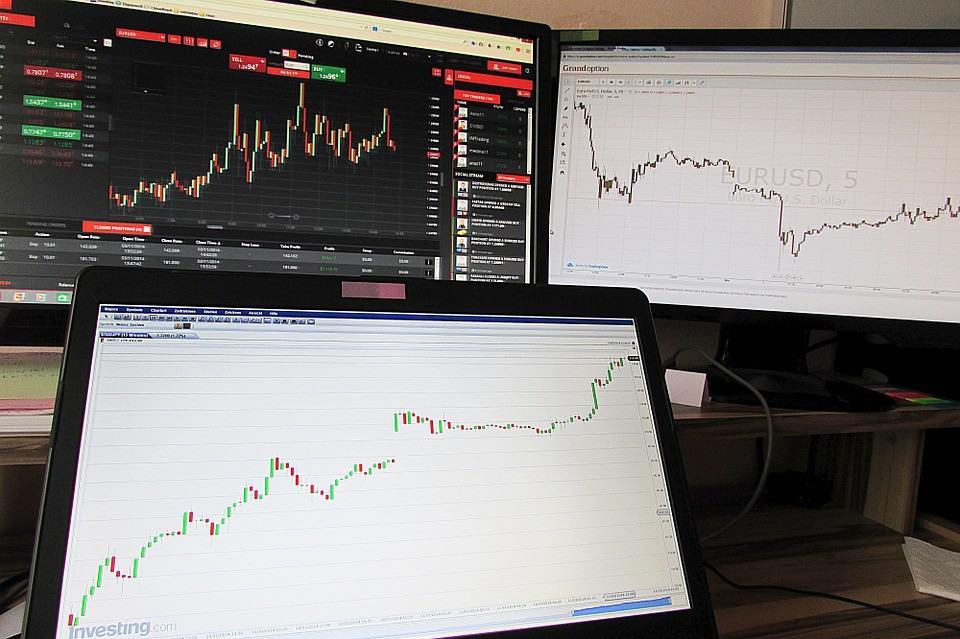What is swing trading?
So, You’re wondering: “what is swing trading?”. Don’t worry this is pretty normal if you are new to the game. Most of the definitions that you will find are unclear and a bit all over the place. At least in my opinion. I will do my best to give you a clear understanding on the matter. Let’s get started.
Firstly, you have to understand the typical swing trading time frame. Here’s the good thing, there’s no set answer, swing trading is a very flexible trading style. This is key to understanding what is swing trading. That is why many people choose it. But, it has many other advantages that I will get into later in this post.
Swing trading is in between day trading and long term trading/investing. This means that a swing trader holds a position that he entered for anywhere between 2 or more days to a couple weeks to a couple months. As a swing trader, you can decide exactly how long you plan on holding your positions. While you can switch it up it’s best to experiment on different trading time frames and then stick to one in specific. For example, I consider myself a swing trader, usually, I hold stocks for a couple days. 4 days on average to be exact, sometimes a bit more, sometimes a bit less. Remember, this is up to you, it should really be based on how you’re able to trade best.
Once you have established on what time frame you will be trading, you can initiate a position, long or short, in the hope that the stock will move in your favour. The goal is to capture a piece of a larger move. This means, that you need to define the direction of the stock and your entry/exit prices before entering the trade. If the trade goes as planned you exit once you got the move you were looking for or when your idea is invalidated. Next, up, let’s look at the difficulty of swing trading and how much experience you may need prior to it. Hopefully, now, you already have a better idea as to what is swing trading.
Is swing trading easy or hard?
Trading the financial markets, in general, is no easy task. Nevertheless, I think it’s safe to say that swing trading, as a technique/style is pretty simple. This bodes well for beginners but also for experienced traders. In fact, swing trading is arguably the best trading style out there. If you ask me, it’s probably the best trading style for most traders. Now we can get into some advantages of swing trading.
Advantages of swing trading:
Flexibility
As mentioned before, this trading style doesn’t require you to follow a set of cut out rules. You can switch up how you are trading. Go long or short, trade various time frames, make decisions based on how your trade is going easily. I think this advantage is self-explanatory. Time to move on.
No Need For Complicated skills
Swing trading doesn’t require you to have a strong grasp of technical or fundamental analysis. You can swing trade successfully with limited knowledge. This makes it really good for beginners. Although, implementing more advanced strategies and concepts will vastly improve your results. Especially technical analysis. Basic indicators like MACD, RSI, Slow-Stochastics are some of the most helpful for swing traders. If you don’t know anything about them, you should probably learn, they will be extremely beneficial.
Little timing required
Timing is obviously required to a certain extent since swing trading is, depending on your time frame, a relatively active trading style. This will put much less pressure on the trader compared to something like day trading.
You can take time off!
Swing trading allows you to do your research and analysis occasionally. You can do it after the market closed for example. This means you will most likely have more time to plan out your trades. For instance, with day trading, you need to constantly be up to date on the market when it is open and ever after it. This is why swing trading is good for people who are busy with things like work for a large part of the day.
Biggest returns!?
Many people think that swing trading can potentially bring the largest profits/returns. This is because the big gains are mostly found in the larger moves. If you’re day trading, you’re looking to make a couple percents at the very, very best. When you are swing trading, you’re trying to capture 5%, 15%, 30%+ moves. One of the greatest traders of all time, Jesse Livermore, said: “Buy right, sit tight.”. He believed that holding positions through the larger moves of stocks was the only way to really make money in the stock market. Let’s take a peek at some disadvantages.
Disadvantages of swing trading:
I am a bit biased when it comes to swing trading . Because of this, I see few disadvantages with it as a trading style. Here are the two I could come up with:
Problems with the patience required
I found that if you’re swing trading on a time frame that is even a bit too long for you, you may get very impatient quickly. This can be quite dangerous as you may sell out of positions just because you feel like you have been in a stock too long. An easy remedy is to find and stick with the time frame that works well for you. However, it is easier said than done at first.
Entering positions in the right area can be hard
When swing trading you buy support and sell resistance most of the time. It can be tricky to time these obviously. You should place a stop loss that allows the trade some time and movement before selling the position. Your plan may be right but exiting too early can be a real problem here. Give the trade a chance to work out but use a stop loss to prevent losses that might get out of hand otherwise.
Conclusion
Swing trading is a great style for any trader. One of the most profitable, simple and flexible. There is no need for in-depth skills but technical analysis will skyrocket your results. I hope you now have a better understanding of what is swing trading.
Best of luck!

